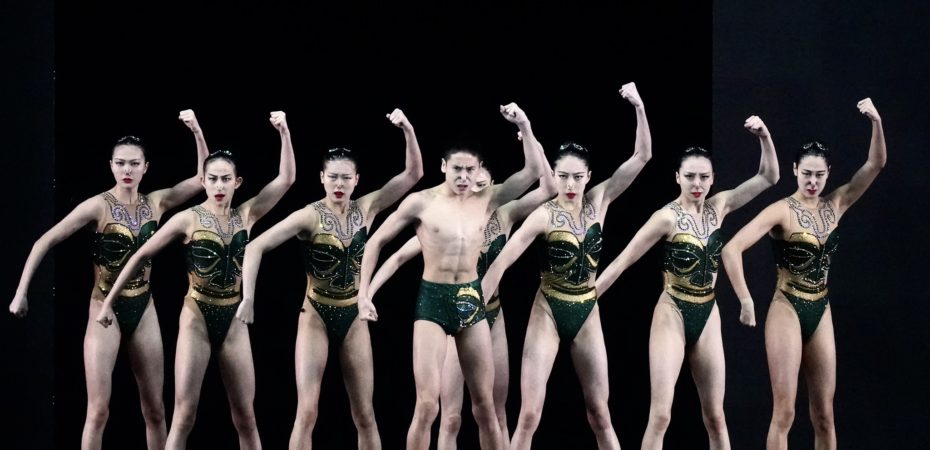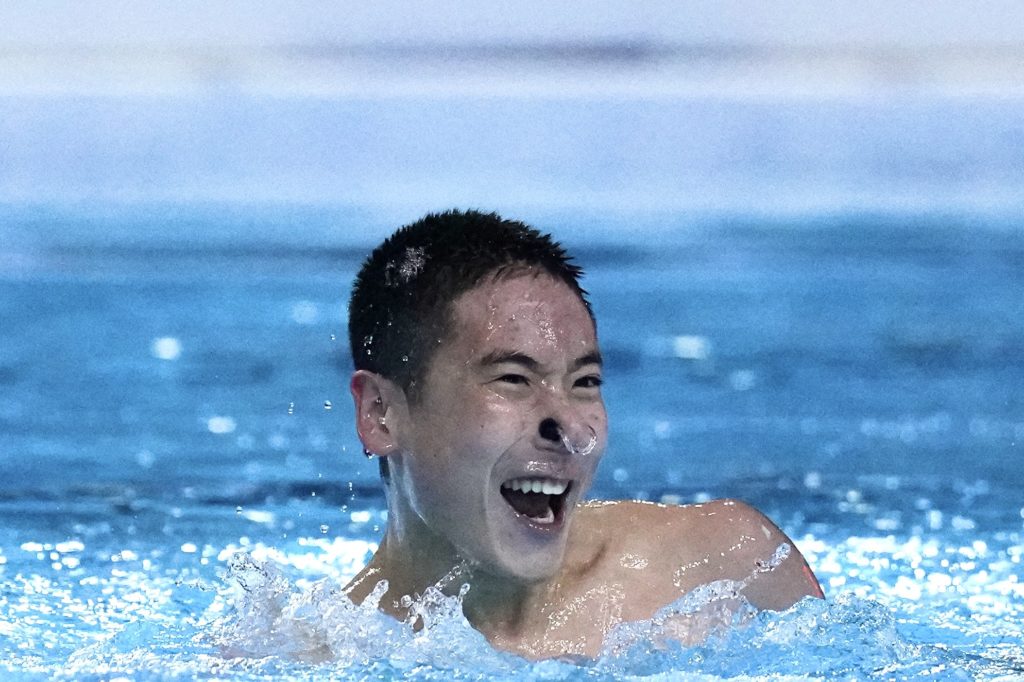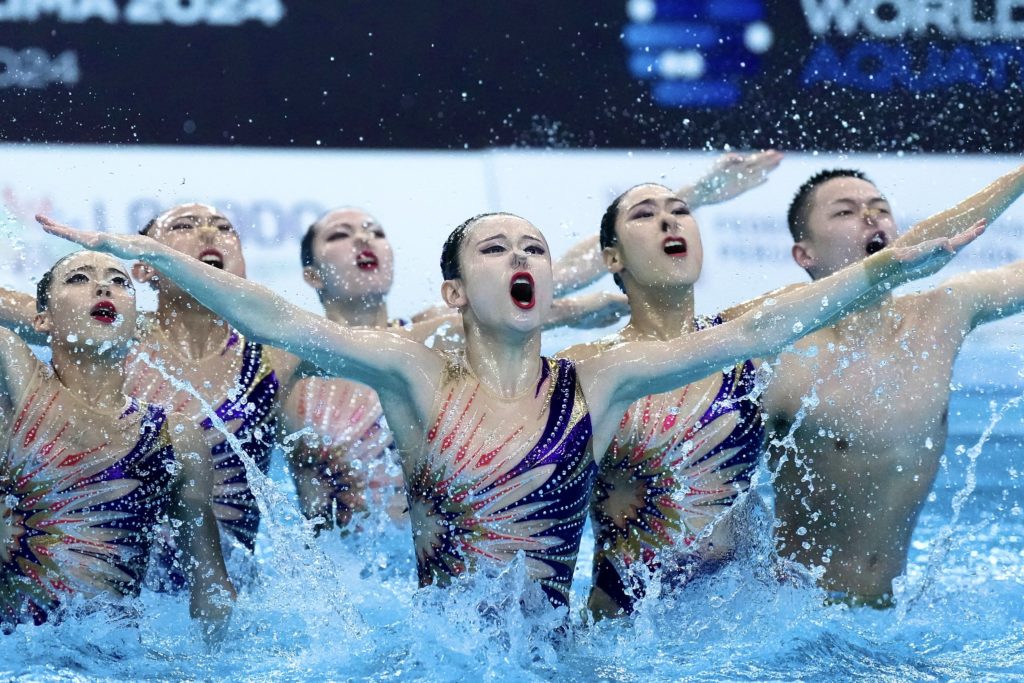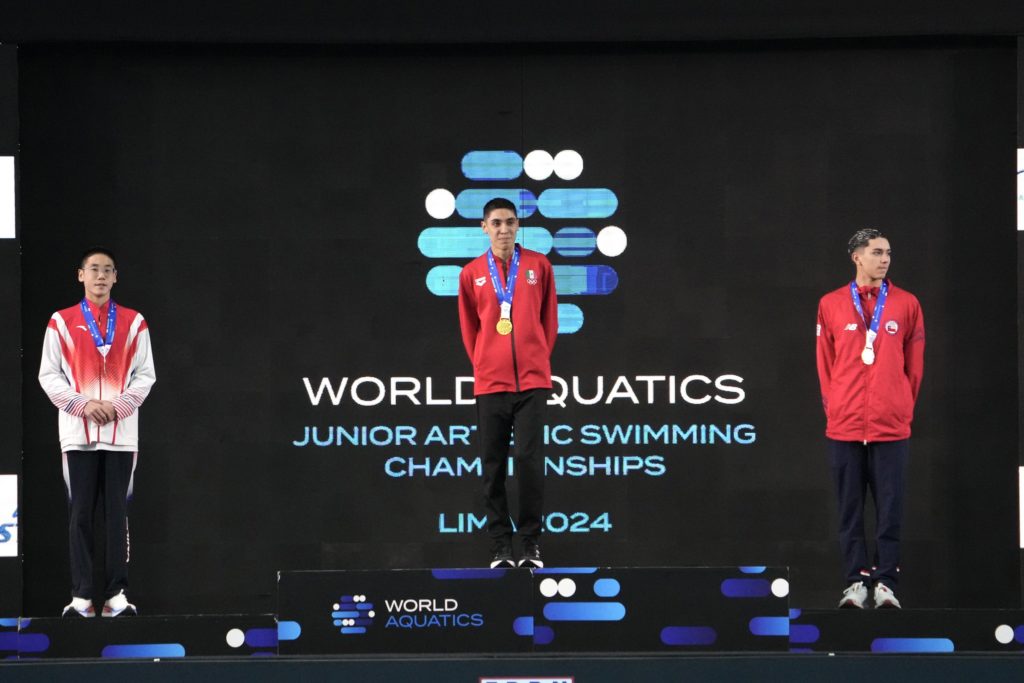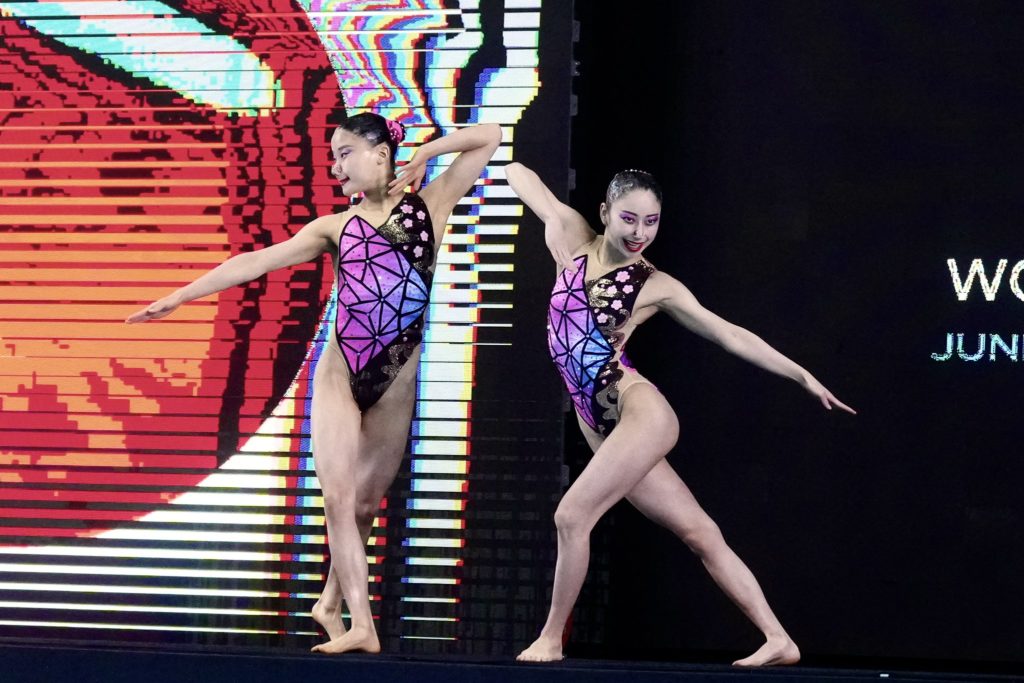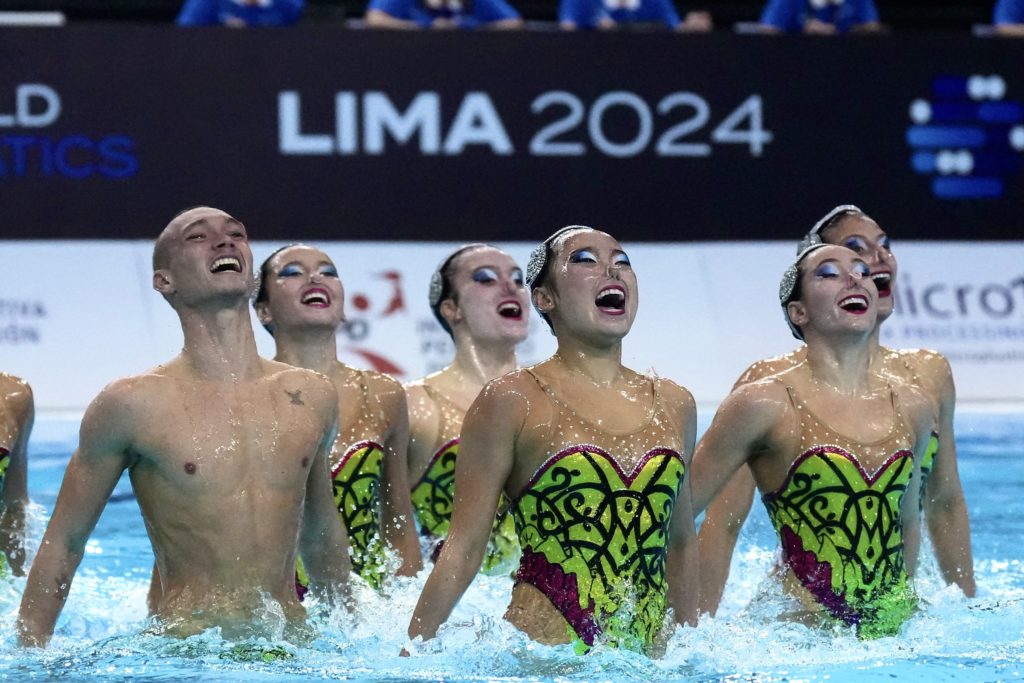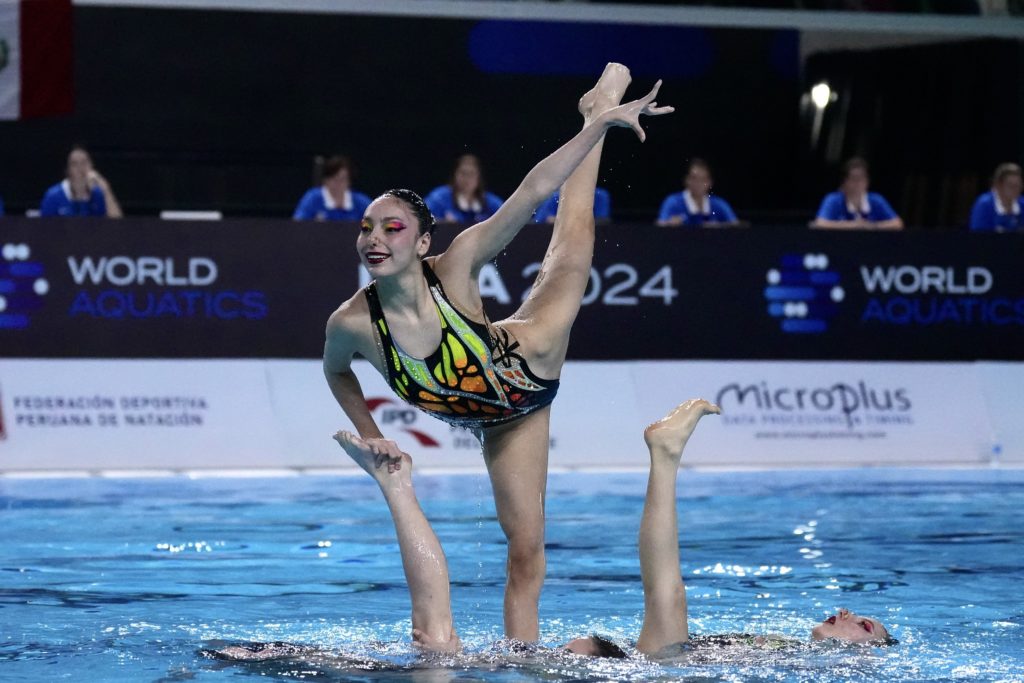The 2024 World Junior Championships not only introduced the new scoring system to this competition for the first time, but also showcased a great emerging generation of athletes aged 15-19 (20 for the boys) from 35 countries.
Held in Lima, Peru, the competition was intense, with China, Mexico, and Japan leading the charge, while several other nations made significant strides on the international stage.
The People’s Republic of China’s return to the World Junior Championships after a notable absence in 2022 was one for the books. With a record haul of 10 out of 11 possible medals, including four historic golds, the nation achieved its best-ever results and firmly established itself as a force to be reckoned with in this age group as well.
This performance certainly mirrors the senior team’s success this season, as it clinched two golds at the Paris Olympic Games and a staggering seven golds at the Doha World Championships earlier this year.
The Chinese team’s success was underpinned by the incredible performances of Guo Muye and Xu Huiyan. At just 16 years old, Guo emerged as the most decorated swimmer of the meet, amassing six medals, including three golds (technical team, free team, and technical mixed duet).
His silver medals in the technical solo and free mixed duet, along with a bronze in the free solo, further showcased his remarkable technique, stability, extension and precision. Notably, this was only his second international competition, following his debut at the Beijing World Cup earlier this year.
Xu Huiyan, who had already claimed a bronze at the Doha World Championships in technical solo, was another standout in Lima. She captured five medals: three golds (technical solo, technical team, and free team), a silver in the free duet, and a bronze in the free solo.
Furthermore, the country’s commitment to developing male artistic swimmers was evident, with Guo Muye and Chen Keyu making significant contributions to the team’s success – Guo swimming in the technical and free team routines, while Chen, who’s still only 14, performed in the acrobatic team.
Mexico delivered an outstanding performance in Lima, securing second place on the medal table with three golds and two silvers. The star of the Mexican team was undoubtedly 19-year-old Diego Villalobos, who ultimately emerged as one of the top athletes of the competition.
After finishing fourth in both solo events in 2022, Villalobos returned to this junior stage with a vengeance, clinching gold in the technical solo, free solo, and free mixed duet. He also added a silver to his collection in the technical mixed duet.
The success of Villalobos, who is also already a three-time world medalist in mixed duet, underscores the strength of Mexico’s up-and-coming generation of artistic swimmers. With three golds, two silvers and several fourth-place finishes in Lima, the country will clearly remain one to watch in the future as some of these athletes move on to the senior stage.
Japan, traditionally a stronghold in artistic swimming and particularly in this junior category, continued to assert its dominance in specific events. The nation secured third place in the overall medal standings with one gold, two silvers, and one bronze.
The gold came in the technical duet, where Mitsuhashi Risako and Uchida Sakurako defended the country’s title, making Japan the back-to-back world junior champion in this event.
Europe’s presence at these World Junior Championships was marked by strong performances from Ukraine, Spain, and the Netherlands.
Ukraine’s duet of Daria Moshynska and Anastasiia Shmonina comfortably won gold in the free duet, only a few days after narrowly missing out in the technical duet event by a margin of 0.7984. The pair, which matches perfectly in the water, was already two-time European Junior Champion in 2023, and obviously continues to make a strong impression on the international stage.
Spain, although not reaching the top of the podium this time, emerged as one of the top junior teams globally, securing five bronze medals in Lima. This consistent performance across multiple events underscores the nation’s status as a leader in this age group and its potential to challenge for gold in the near future.
Isabel Shuang remains one of the top junior athletes to watch, despite a mishap in the technical solo, thanks to her strong technique and quality of movement in the water. Obviously, the duet Naia Alvarez and Rocio Calle has a bright future ahead as well, after winning two medals here, coming on the heels of two golds at the European Junior Championships.
The Netherlands also made a significant impact, with Marloes Steenbeek earning two silver medals in her final junior campaign. Steenbeek’s strong and engaging performances capped off a tremendous season for the Dutch team, solidifying their place among the elite after winning multiple medals on the European, World, and Olympic stages.
The 2024 World Junior Championships also witnessed the emergence of new talent from across the globe. Chile’s Nicolas Campos made history for his country, winning a silver in free solo and a bronze in technical solo, displaying tremendous progress in his skills and technique.
Greece’s Zoi Karangelou claimed gold in the free solo, narrowly edging out Steenbeek by just 0.1498 points. Her routine’s high Degree of Difficulty set her apart and allowed her to ultimately stay at the top of the standings, after claiming first place in the preliminary rounds as well.
Italy, who did not field a full team in Lima, secured a bronze in the technical mixed duet thanks to a strong routine from Filippo Pelati and Sarah Maria Rizea.
Slovakia’s top 10 finishes in the four events it entered, Georgia’s Maria Alavidze making significant strides in the solo rankings, and Colombia and Peru qualifying to the free solo and free team finals, respectively, further highlighted the increasing competitiveness of nations outside the traditional powerhouses.
One of the most closely contested events of the championships was the acrobatic team, with only 0.6399 separating the three medalists. Interestingly, all three had identical DD of 25.20, which meant that the final standings came down entirely to execution, artistic impression and… avoiding costly mistakes.
Swimming first in the final, the USA ultimately narrowly claimed gold with their high-energy routine, edging out Mexico, who lost crucial points due to bottom touches that resulted in a four-point penalty.
The 2024 World Junior Championships in Lima capped off an intense season, highlighting the sport’s shifting landscape. As the season wraps up, all eyes are now on the upcoming changes to the rules—farewell to two-directional twists, perhaps?—which will undoubtedly shape the future of artistic swimming even further.
ARTICLE BY CHRISTINA MARMET
All photos courtesy of Federación Deportiva Peruana de Natación
If you’ve enjoyed our coverage, please consider donating to Inside Synchro! Any amount helps us run the site and travel costs to cover meets during the season.

